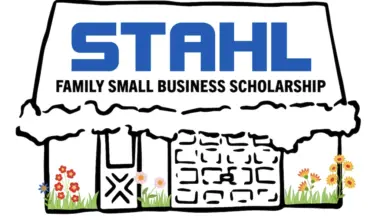The Not-So-Soft Side of Soft Signage
In this growing signage segment, grand-format textile opportunities abound
Recently, EFI recently received an interesting call from I.T. Strategies-one of the consulting firms we work with in our strategic market planning. They said they needed to make a revision to their prediction forecast related to industry growth rates for soft signage.
Usually a call like this is unwelcome news; it typically happens when researchers are too enthusiastic about a market opportunity and, after reviewing more data they have to revise their forecast downwards.
And while I.T. Strategies did admit that their initial forecast was off, they were taking the unusual step of revising their forecast upwards. Looking back at their data, the analyst group determined that the market was growing at least four points higher than they initially predicted, with the segment enjoying double-digit growth.
Appeal of Soft Signage
One might wonder why the segment would demonstrate that type of growth. Well our company’s own experiences using soft signage is a perfect example of why brands are increasingly interested in moving from conventional signage to soft signage. At EFI, we participate in more than 100 trade shows per year, or roughly two per week. Historically, we would create single-use vinyl banners for each show and dispose of them at the end of the event. Those conventional signs were expensive to ship and easily damaged.
Now, however, having switched to soft signage, we have about 10 banners that we can reuse throughout the year. While the per-piece cost is higher, overall we experience tremendous savings, printing only one-tenth the number of banners. At the end of the event, you can fold that banner up and place it in a FedEx envelope and get it on its way to the next event. Have you ever tried to ship a 10-foot banner tube? It’s expensive, and you often can’t ship it overnight. These days, if we don’t have major branding changes, we can even use the same soft signage beyond the one-year mark!
The other aspect is ease of installation. If you sew a silicon edge into the graphic, it fits neatly into a frame; and it’s really hard to mess up. It doesn’t take special skills or expertise to install it. Going beyond trade shows, think a about retail stores-they like to frequently change in-store signage to reflect new items, sales, or other messaging of the moment. With silicon-edged soft signage, anyone in the store can quickly, easily and accurately change out the signage. No need to bring in specialized labor to get it done.
These are a few of the reasons that well-known brands are increasingly turning to soft signage. But even more compelling, they like the way it looks. It offers a much higher-end look and feel and is still a measure of differentiation-it simply looks better than conventional signage.
Shop Perspective on Textile Printing
From the producer’s perspective, soft signage has many benefits as well. First and foremost, not everyone is doing it. In fact, our data reflects that only one in nine signage establishments offer soft signage. That means there is still a significant opportunity for market differentiation-and better margins for signage producers. From a sales perspective, it also gives the sales person something new to talk about, and often gains them an entrée into accounts where someone else has been firmly established.
One EFI customer in Portland, Oregon, was quite interested in getting into soft signage. This was around the time EFI acquired Italian textile printer maker Reggiani Macchine, and the customer did not have the amount of business that would justify a high-volume EFI Reggiani textile printer investment at the time. Space was also a consideration for this customer as well
But developments-such as the EFI VUTEk FabriVU series, which offers the same high-end imaging technology as Reggiani printers, but is designed for more moderate production volumes-are making soft signage more attractive to this customer and others. On top of that, yet another new technology-fabric printers featuring in-line sublimation capabilities-changes the equation for businesses that also face investment and space constraints for installing a calender machine or heat press. For our very entrepreneurial customer in Portland, the EFI VUTEk FabriVU 340 model was the key that allowed him to jump into the market with both feet.
There’s another perk that this and other soft signage companies have experienced: Once they acquire a new customer for soft signage, that customer is also more likely to send other signage work to them as well. One particular customer told us, “If it weren’t for soft signage, our business definitely would be down. We are able to offer something new and unique. And we are growing, both due to the new revenue source-soft signage-and the fact that those soft signage customers are sending us conventional UV banner work as well.”
Practical Considerations
While offline sublimation with a calender unit is a preferred workflow industry-wide, not everyone can afford the investment or have the physical space to accommodate both the printer and the calendaring machine. Printers with an integrated sublimation unit make it easier from an investment and space perspective to enter this lucrative market. Once the volume grows and it makes sense to add an offline calender unit, the in-line sublimation on the printer can be turned off to accommodate that higher-volume workflow.
An offline calendaring workflow with heat transfer paper is preferred, especially when the shop offers a wide range of fabric types. If you have eight, 10 or 12 different fabric types, the time required to change between fabrics is time not spent printing. Many producers and their customers also prefer the feel or hand of the fabric with heat transfer sublimation, since direct-to-fabric digital textiles are usually coated and can feel and look different.
Furthermore, with heat transfer paper, you can print continuously, and there is less fabric waste. In addition, calender machines are much better suited for use with stretchy fabrics. The cost of the heat transfer paper is nominal, especially when you consider that you don’t need to put as much ink down when using this process.
Business Perspective
These are the business reasons for the growth in soft signage. The range of possible applications is another adoption driver. There are many examples of projects that will inspire you as you think about how soft signage can help your business-either as a brand or a producer. But truly, your imagination is the only limit. For even more unique and interesting applications, visit www.imagingofthings.com, which is an online gallery of impressive superwide format and digital print applications.
Or take the time to walk through your local mall or attend some trade shows to look for ways soft signage is being used. You’ll also want to talk to customers and prospects about their interest in soft signage. You’ll be amazed at the level of interest this discussion will spark. And that interest can quickly be turned into revenue for your company.






